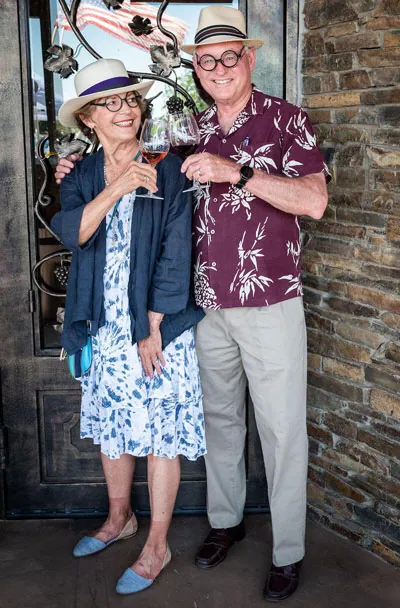WHO WE ARE –
About Us
Our Story
Where Passion Meets Heritage
At the heart of our winemaking journey lies a story of love, heritage, and an unyielding passion for creating exceptional wines.
It all began in the picturesque vineyards of Amador County, where Scott, our founder, grew up savoring the rich flavors of his step-grandfather’s homemade wine, crafted from the very grapes that adorned their family estate.
However, it was a serendipitous moment during his teenage years that ignited a spark within Scott.
As a foreign exchange student, he found himself embraced by a warm winemaking family in Germany. In their welcoming home, a defining moment unfolded when they handed him a glass of wine. Gazing out of the window, he couldn’t help but ask in German, “Does this wine come from those grapes?” They then took him down to the basement and pulled him another glass from the barrel aging there. Their joyful affirmation set the course for his destiny.
Fueled by the desire to delve deeper into the art of winemaking, Scott returned to Germany a few years later, seeking his exchange family’s guidance to join winemaking school. It was a life-altering decision that transformed his palate and aspirations. Regrettably, the wine from his grandfather’s vineyard no longer sufficed; a new standard had been set, and Scott’s passion for winemaking had evolved.

With winemaking coursing through his veins, Scott returned to the Sierras, determined to elevate Amador County to a world-class wine region.
Tirelessly pioneering the area’s potential, he immersed himself in various wineries, honing his craft, until destiny beckoned him to Napa Valley, a mecca for any winemaker. Scott’s winemaking mentor had just bought a small winery in Napa and needed a winemaker for the project. Dr. Richard Peterson asked Scott to make it a takeover candidate by a bigger winery. Scott went to work and created Menage a Trois which did the job. But despite the allure of Napa, his heart remained steadfast in Amador. The turning point arrived when the Napa winery he worked at was sold, presenting Scott with the golden opportunity to reclaim his dream.
But he knew he couldn’t embark on this journey alone. Enter Jana, a kindred spirit he met in Napa Valley.
With 20 years of expertise in sales and marketing, she shared his vision and passion for building a wine company, making her the perfect partner to complement his winemaking brilliance.
Together, they set forth on an extraordinary adventure, crafting wines that transcend the ordinary, each bottle infused with a deep-rooted love for their craft and an unwavering commitment to quality.
Scott’s lifelong mission became clear – to create remarkable wines while nurturing Amador County into a world-class appellation.
Today, as we raise our glasses to celebrate life’s moments, both big and small, we invite you to join us in this remarkable journey. With every sip of our wine, you taste not just the fruits of our labor but also the culmination of a tale steeped in passion, heritage, and the pursuit of winemaking excellence. Together, we savor the beauty of a dream fulfilled and the promise of a future filled with exceptional wines, one bottle at a time.
